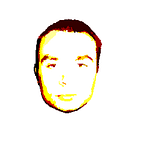Abstract art, geometry and algorithms
Dematerialization of the sculpted form has its basis not only in physics and technology, but in the thought processes of the mathematician. Euclid’s The Elements c.300 BC has been referred to as the most successful and influential textbook ever written. Elements has been estimated to be second only to the Bible in the number of editions published since the first printing in 1482, it proposed laws of mathematics using geometry as its method to prove them, through the investigation of shape, size, relative position of figures, and the properties of space — The quantifying of the visual field through measurement.
Muslim scholars did not represent the world as they saw it, they used abstract ornamentation. Symmetrical subdivision of the plane giving rise to intricately interwoven designs that speak of infinity and the omnipresent center. Repeat patterns which operate mathematically on a flat two dimensional plane. These patterns often operated on rotational and reflective symmetry, rotating on 2, 4 or 3, 6 points of themselves, the whole pattern able to fold back into itself both on rotation and through reflection. The artist and the mathematician in arab civilisation had become one. These islamic designs are based on their own self contained measurements. Islamic scholars were not attempting to create change in the World with this work but to show a description of the underlying nature of reality, Western Europe and the enlightenment through the evolution of scientific methodologies produced the cultural idea of change we see today.
The Alhambra, Granada, Spain.
Pascal’s Theorem
Blaise Pascal was a child prodigy in 1642 he invented the arithmetic calculating machine, the forerunner of the modern computer, with its goal of thinking through certain types of basic mathematical problems. This machine Blaise invented whilst still a teenager was designed to assist his father in his work as a tax collector. Pascal’s theories opposed many of René Descartes ideas whose Cartesian geometry give us today the coordinates system we find used to map or position ourselves. Descartes and Pascal believed that an abstract system of…
